North Vietnam, Bai Thuong Dam, 15.12.1956 (Michel Nr. 50-52); On occasion of the rebuilding of the Bai Thuong dam in Than Hoa province the postal authorities issued three values with the nominals 100D, 200D and 300D. The Vietnamese Postage Stamp Catalogue reports that the stamps were produced at the Vietnam National Bank Printing Works in Hanoi and that they were issued with a perforation of 11.5. There were 100 stamps to each sheet. Michel and Scott report a second perforation variety of 13 that was apparently produced later on in 1958. Based on empirical data by simply sorting the stamps into the two groups in the very large collection of the editor it appears that the original perforation of 11.5 is actually rarer than the 13, which is the opposite of what the catalogue makers report. The 11.5 perforation is very rough and all stamps have small faults, which is normal and does not depreciate their value. The 13 perforation is often cleaner but the editor measures the stamps closer to 12 3/4 so the catalogues may be a little off here.
Here is the complete mint set in perforation 11.5. This perforation was used on the first printing and, contrary to what the catalogues pricing indicates, is much more rare than the later printing that used perforation 13.

This is the complete mint set in perforation 13
Below are blocks of four of the 13 perforation. Please note the plate error on the top left 100D stamp (exploding water) and the bottom right 200D value (diagonal crack in dam). See further details under errors below.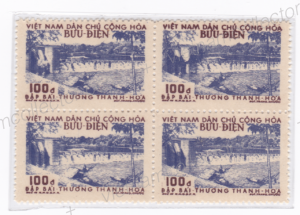
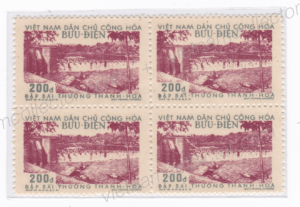
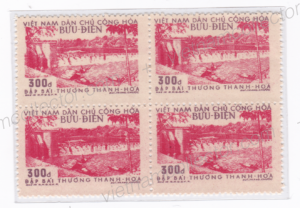
Tonality issues do occur as can be seen here on the the 200D stamps. They are a function of the amount of paint that was directed to the printing plate during the printing process. On the left stamp less and on the right stamp more of the brown-red color was directed to the printing plate. These variances are often offered as errors but they are not.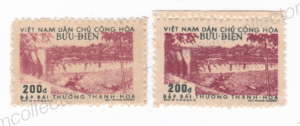
As usual, postally used stamps are rarer than CTO ones and hence more expensive. Scott annotates that postally used stamps are worth about ten times the CTO catalogue value. Michel list postally used at about 6 times the CTO value. This is the complete set perforated 11.5 postally used.
Rare piece, probably from a large letter or package wrapper with four of the rarer 100D value among other early NVN stamps.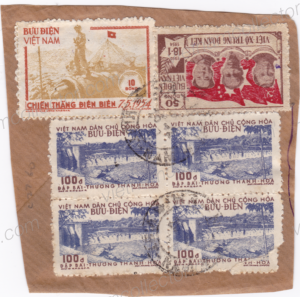
And here is the postally used 13 (or 12 3/4) set
Most used stamps come with the typical Hanoi CTO cancel. Here is a sample of what that looks like in perforation 13 (or better 12 3/4)
Here is a perforation error on the 100D stamp that is imperforate at the bottom.
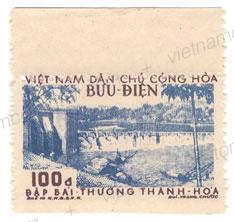
Another perforation error features the 100D stamp as oversized in the middle and imperforate at the bottom.
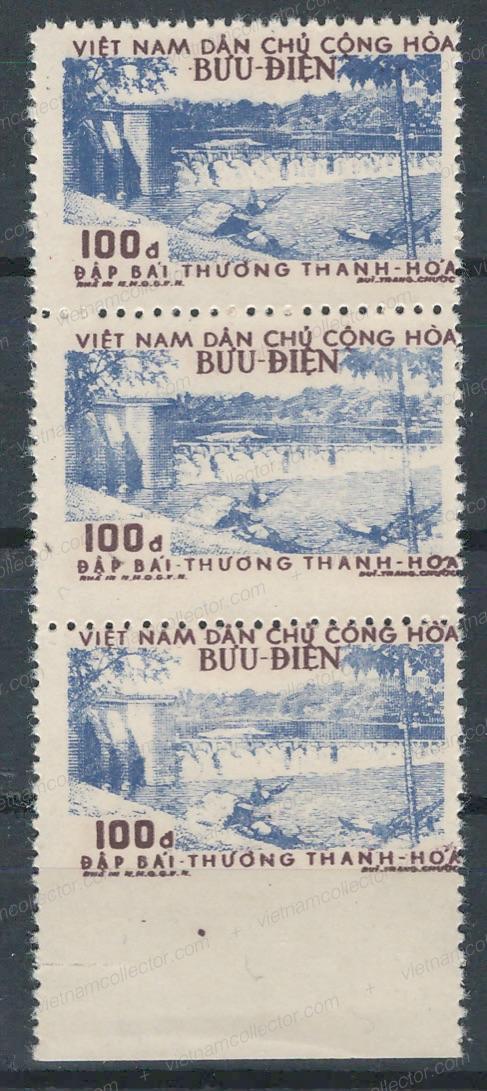
There are some re-occuring plate errors known on this issue. Since all three nominal were printed off the same plate they can occur on all three values. It is not known if these faults affect the entire production or only part of the overall printing. Here is a single value of the 100D stamp (perforation 13) that shows the water in the left spillway “exploding.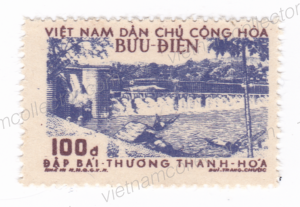
Here is the 100D stamp (Perf 13.0) that shows the plate error “clearing in tree line above dam”.
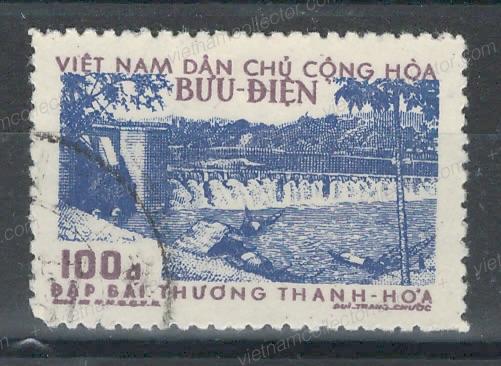
Detailed scan of the affected area:
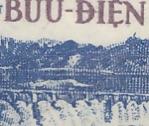
This is a plate flaw on the 200D value that shows a large crack in the plate to the right of the left dam wall. 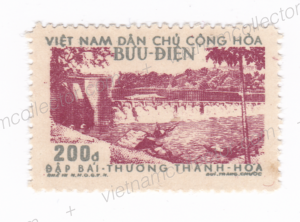
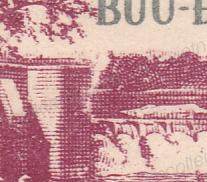
Here is a used 200D stamp (Perf. 13.0) that shows a similar but yet different plate error “white line through center of dam.
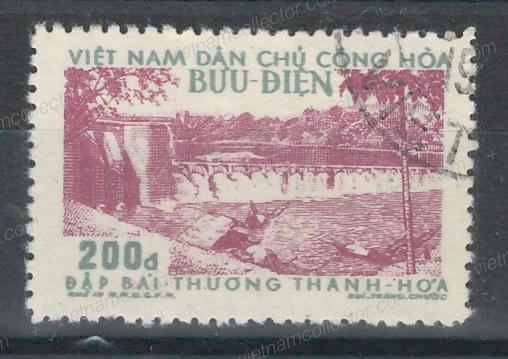
Detailed scan of the affected area:
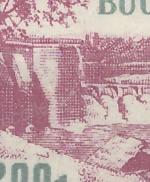
There is a re-occuring plate error that shows a diagonal crack from the top right of the dam pillar down to the dam. Here is a mint 300D stamp (Perf. 13.0) that shows the error:
Detailed scan of the affected area:
This is the 300D value (perforation 13) with the left stamp showing the same error on a this used pair of two.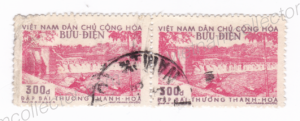
This is a mint block of four of which the top left stamp shows the re-occuring plate error of a diagonal line from the bottom of the dam pillar towards the right tree line.
Detailed scan of the affected area:
Another mint block of four (Perf. 13.0). Again the top left stamp
Detailed scan of the affected area:
Here are pairs of the 100D and 200D values (Perf. 13.0) with the left and top stamps showing a reoccuring plate error of “missing palm leaves”.
There is also a significant color variation on the 100D value. This is not of the usual tonality issues of more or less color used in printing. Here a totally new color has been used to print the stamp. Instead of violet-blue it is violet-ultramarine (according to the Michel Color Guide). Below you will see the normal color on the left and the error color on the right (Perf. 11.5). Interestingly enough, the error occurs on both perforation variations indicating that the first and second print run each must have used these different colors to print. The variation has been reported to Michel and it may appear in a future catalogue. The ultramarine version is pretty scarce but one can see it occasionally offered on stamp websites for a hefty surcharge.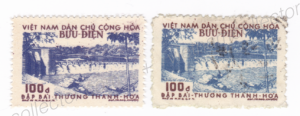
Here is the error stamp (Perf. 11.5) in the mint version.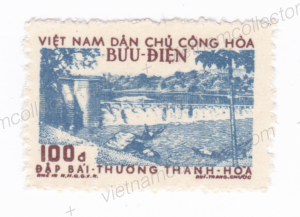
Perforation Errors do occur. Here is the a vertical pair of the 200D value (perforation 11.5) that is horizontally imperforated inbetween the two stamps.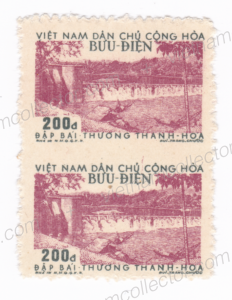
According to the Vietnamese Postage Stamp Catalogue this set was not released imperforated. Nevertheless, sometimes imperforated stamps are being offered in the market place. These are usually just photocopies that come on different paper. Below shows a perforated genuine stamp on the left and the imperforated photocopy on the right. As you can see the color of the copy looks more violet than violet-blue and the entire image is a lot more blurry than that of the original. 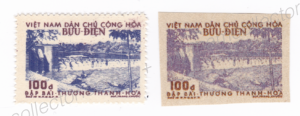
Postal history of these stamps are more accessible but are not common by any means. Below is a very rare local letter franked with three 100D of the dam series for a total franking of 300 Dong mailed in Due Tho. Two transit cancels on the reverse. Very little is known about the postal tariffs of North Vietnam in the 1950’s. The information we have all comes from the few surviving envelopes. It is belied that the standard letter rate until November of 1957 was still 100D. So this letter would represent the third weight level indicating a heavier content. Note that the third stamp shows the plate error” part of palm leaf at right missing”. 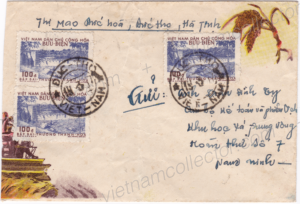
Very pretty three color franking of all three stamps on a letter from October, 1957 to China. Note the square Chinese censor markings on front and back. All stamps perforated 13.0. The 100D stamp is of the rare ultramarine color variety. The basic surface letter rate was 300D so this letter must have weighed above 20g for the second weight level with a 600D tariff.
Mixed franking of the Agrarian Reform, Dien Bien Phu, HCH Birthday, Bai Thong Dam and Production and Thrift issues paying an overall tariff of 650D on an international air mail letter sent from Hanoi to Pilzen in Czechoslovakia in May of 1958. This rate was dictated by the March 15th, 1957 by the 300D surface letter rate plus 350D for air mail delivery.
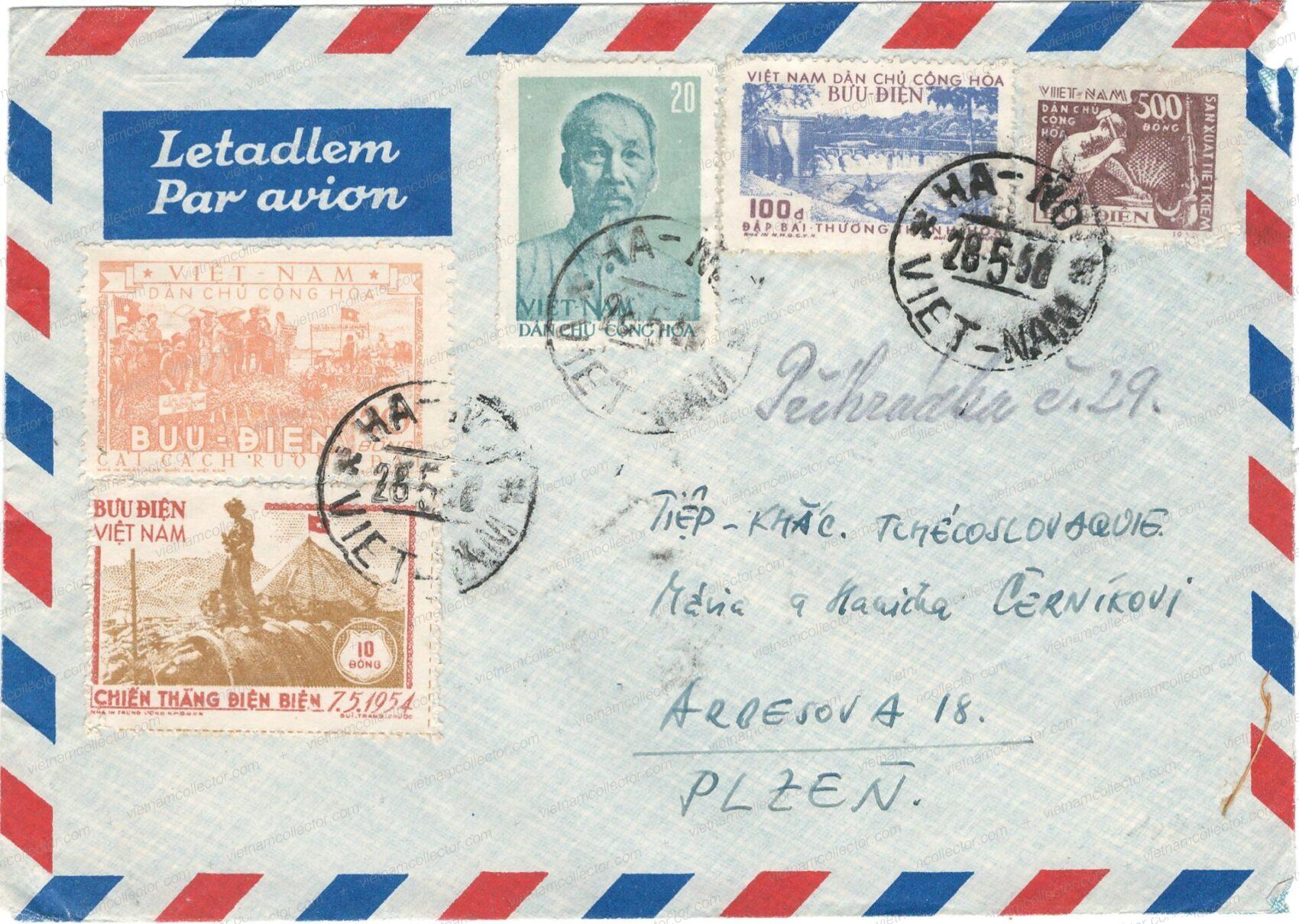
Mixed franking of the 150D and 500D Physical Education stamps together with the 100D Dam stamp (Perf 13) paying an overall postage of 750D on an international air mail letter sent in March of 1958 from Hai Phong to West Germany.
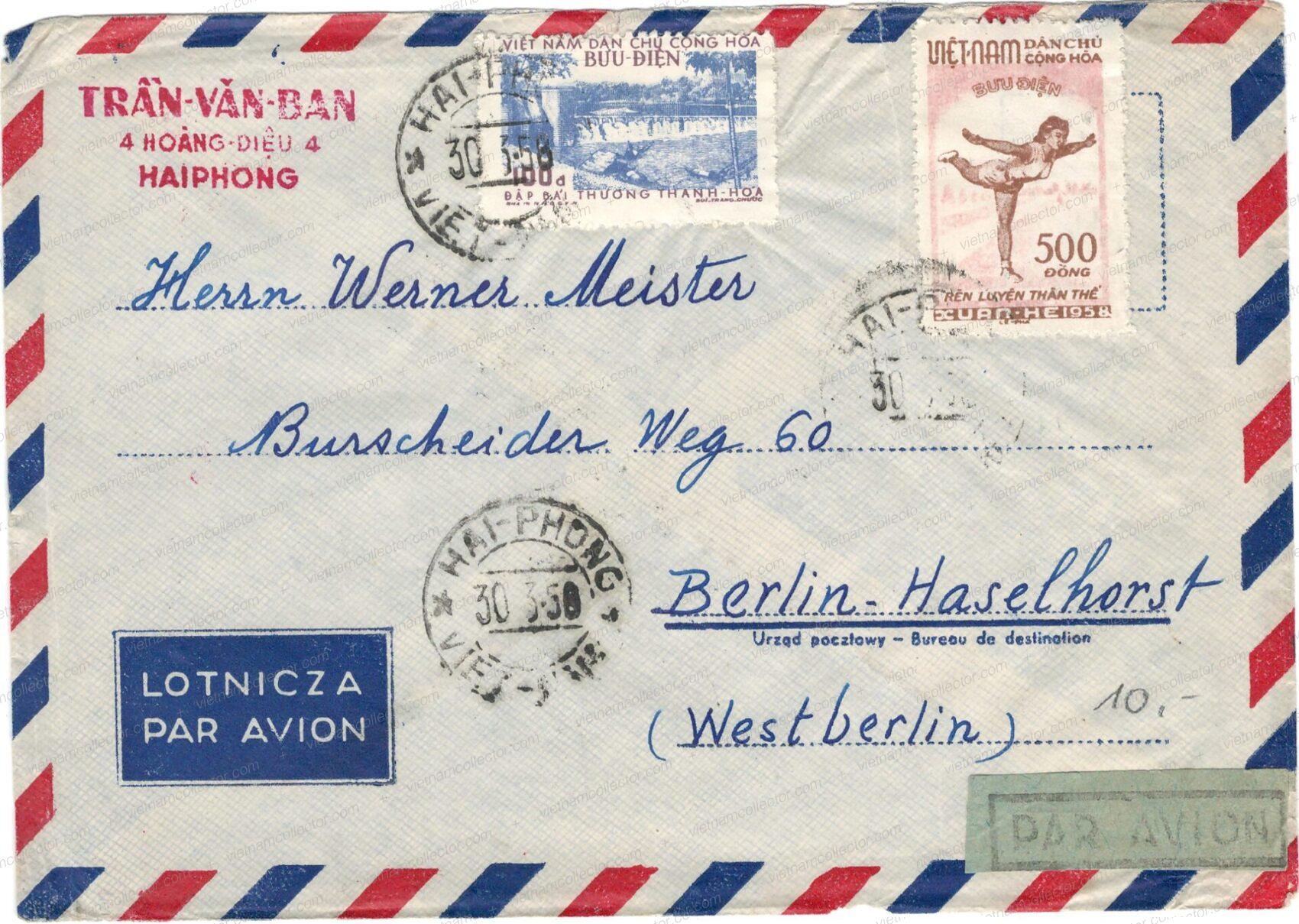
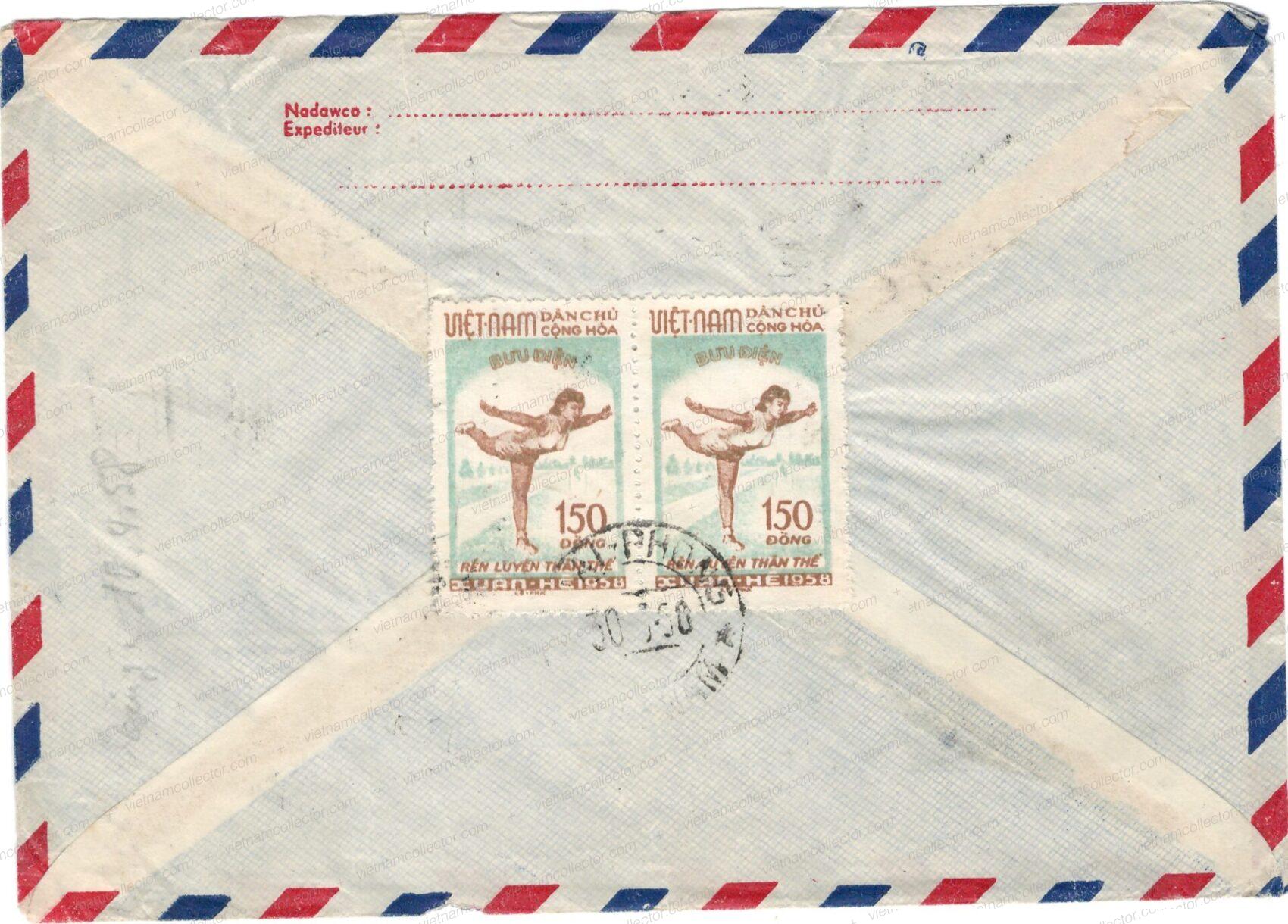
Mixed franking featuring the Reunification set plus stamps from the Bai Thu ong Dam and Campaign against Illiteracy sets paying an overall tariff of 650D on an international air mail letter sent in June of 1958 from Hanoi to Czechoslovakia. According to the tariff of March 15th, 1957 this postage was made up of the 300D surface mail letter rate plus a flat 350D air mail surcharge.
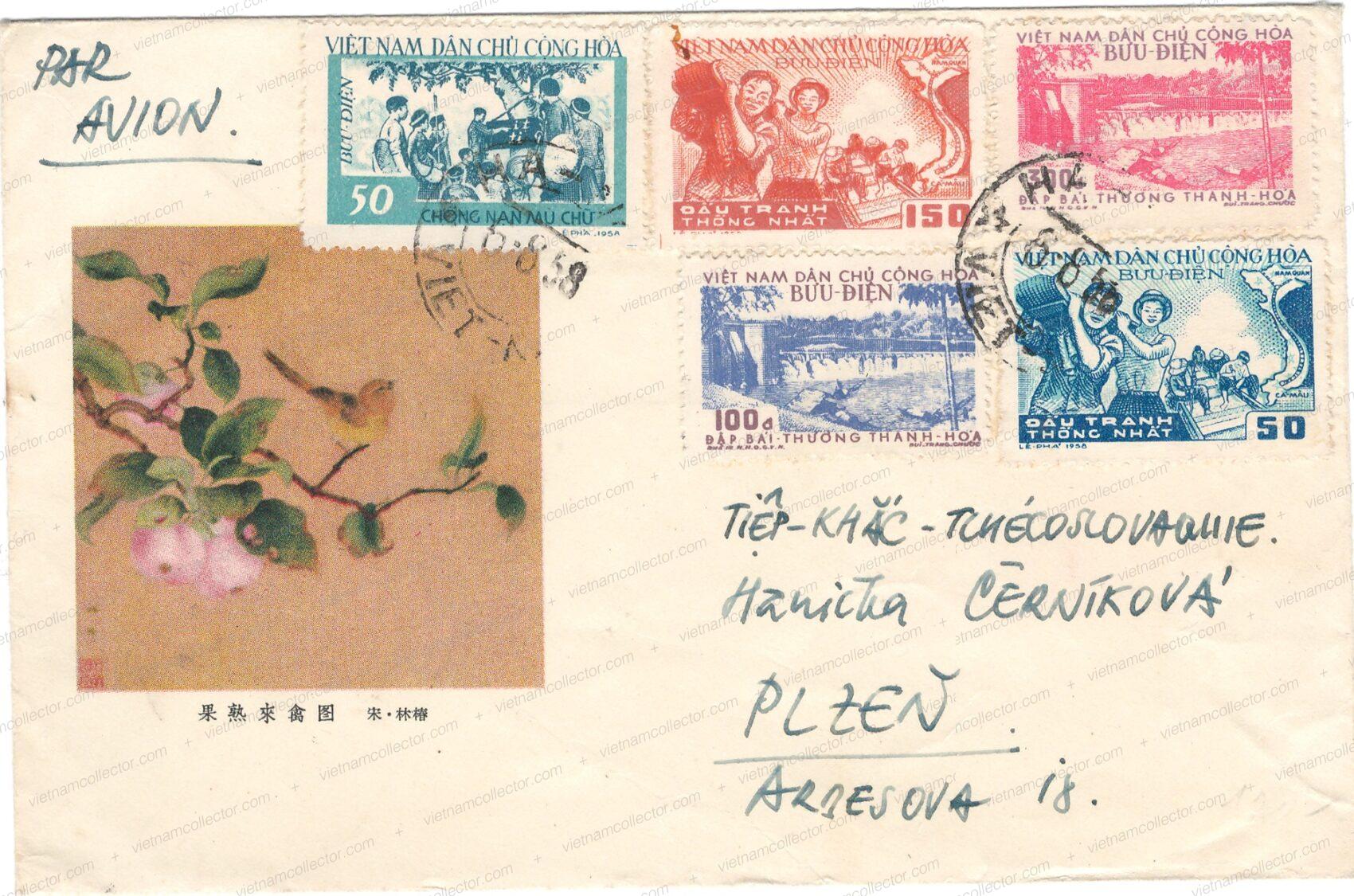
Mixed franking of two 200D Dam stamps (Perf. 11.5) together with the 500D Production and Thrift stamp paying an overall postage of 900D on an international air mail letter sent from the East German Embassy to a Collective in East Berlin in December of 1956.
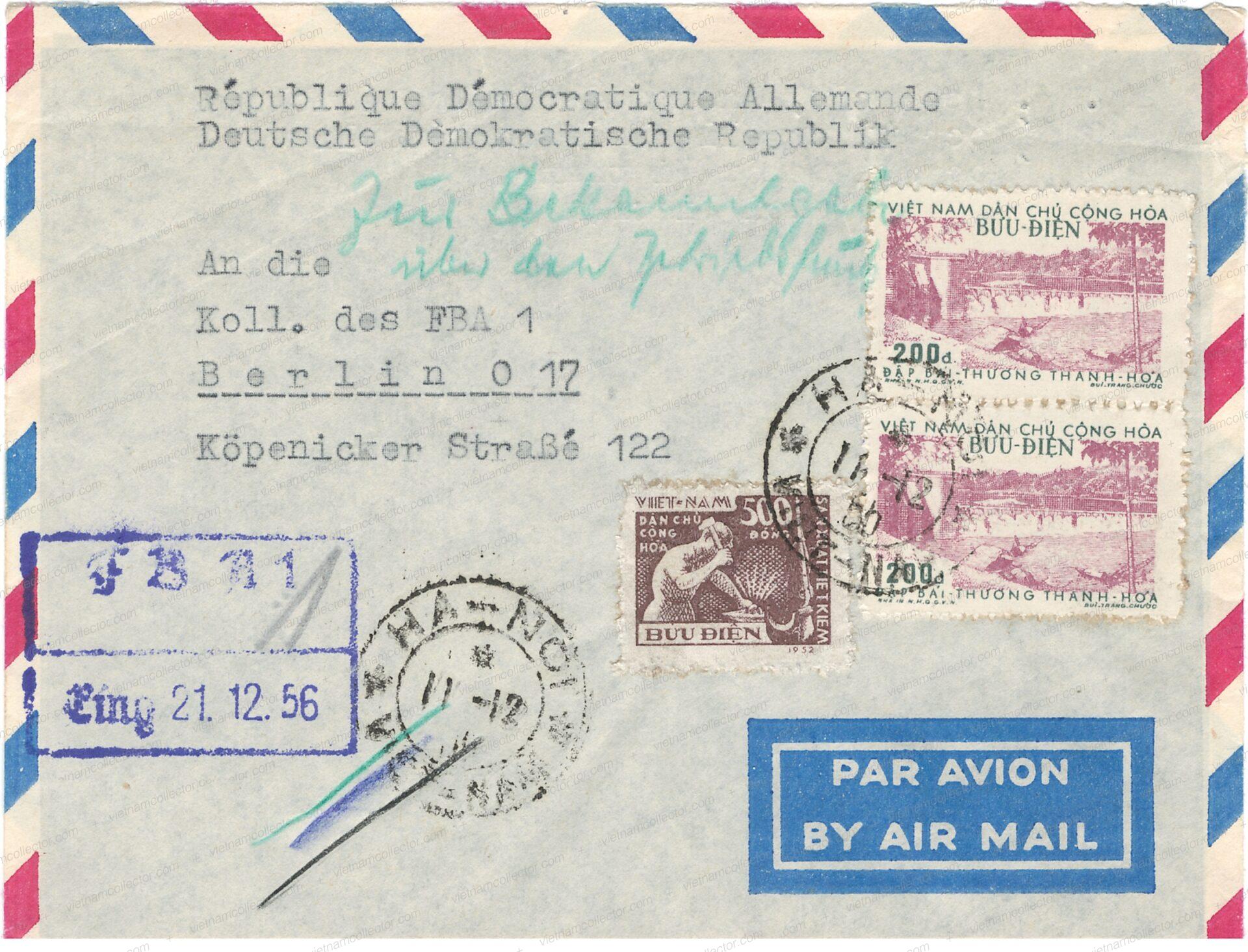
Mixed franking of the 100D Tran Dang Ninh (2) together with the 200D Dam stamp (Perf 11.5) and the 500D Production and Thrift stamp paying an overall postage of 900D on an international air mail letter sent by a member of the East German Embassy from Hanoi to family in East Berlin. Note that the top 100D Tran Dang Ninh stamp shows some production flaws in the shape of thin blue threads on top of the person’s hat.
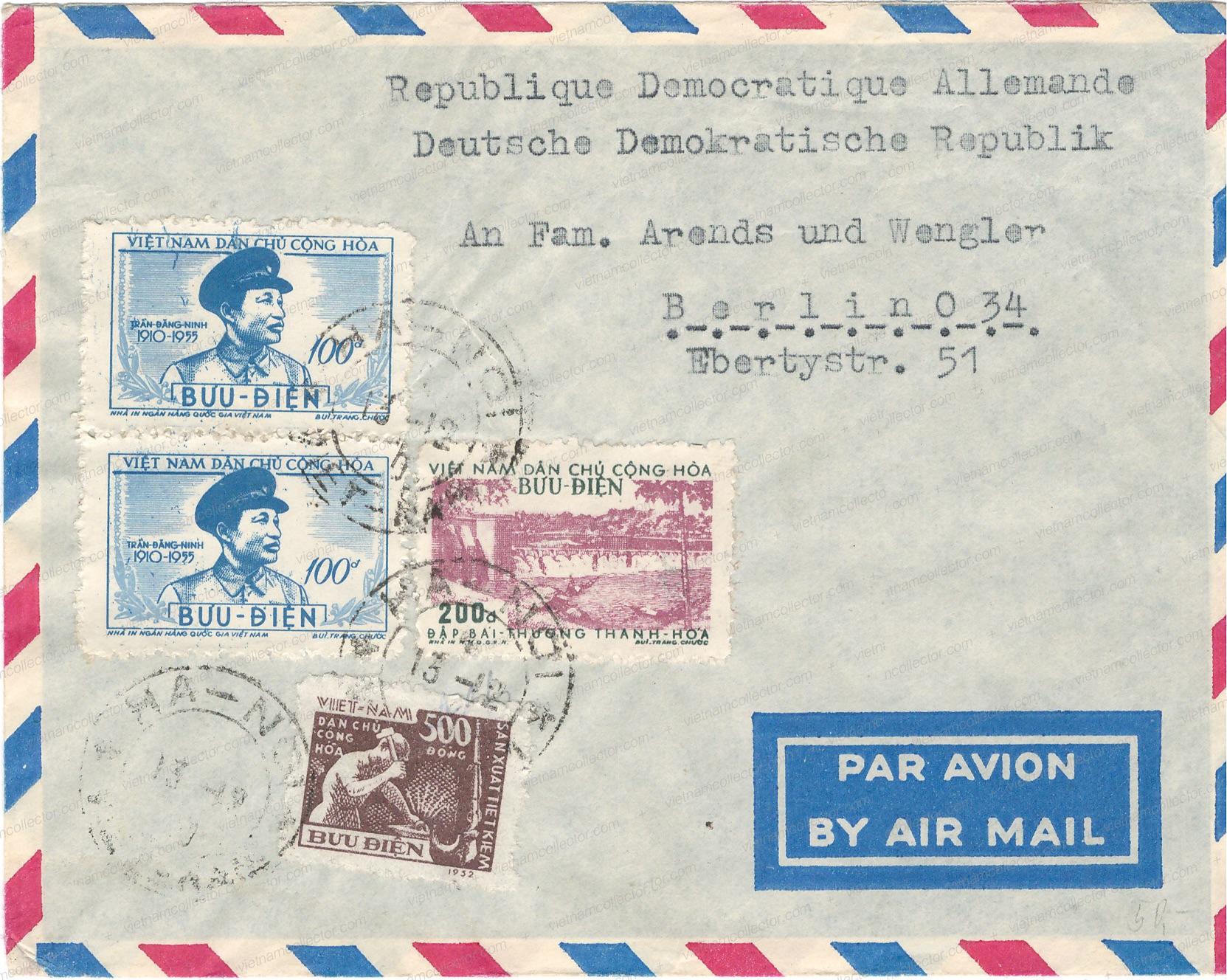
Another mixed franking from January of 1958 sent from Hanoi to Czechoslovakia using the 300D World Union Congress stamp plus one 150D Liberation of Hanoi and 200D Bai Thu’o’ng stamp (Perf. 11.5) for an overall postage of 650D (300D base rate plus 350D for 15g of air mail weight)
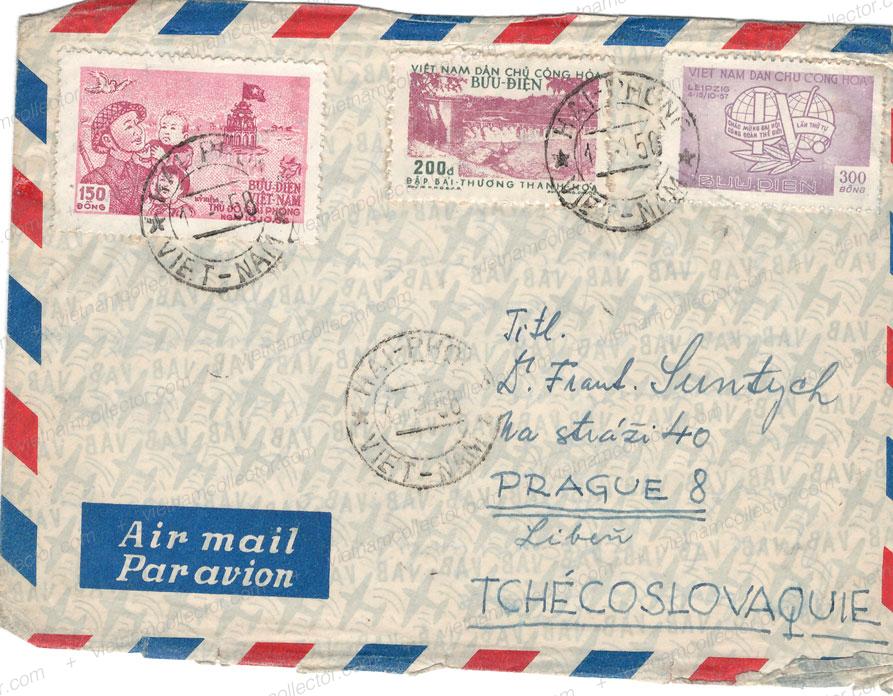
Mixed franking of two of the 300D Dam stamps (in the rare perforation 11.5) together with the perforated 50D Dien Bien Phu stamp paying an overall postage of 650D on an international air mail letter sent from Hanoi to East Germany in August of 1957. The letter is addressed to a high level doctor at the world famous Charite’ hospital in East Berlin. This was the correct tariff at that time (300D base rate plus 350D air mail surcharge for the first 5g in weight).
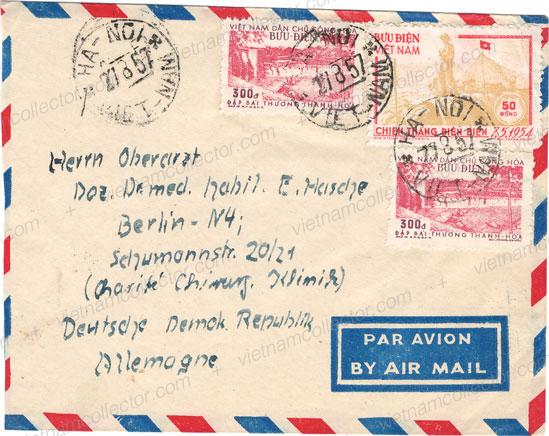
Here is a similar registered letter, also sent by the Czechoslovakian Embassy, mailed in January of 1957 and carrying one of the 1,000D Mac Thi Bu o’i stamps plus stamps from the Liberation of Hanoi, Bai Thu’o’ng dam and Tran Dang Ninh sets for an overall postage of 1,480D. Czech arrival cancel from February 4th, 1957.
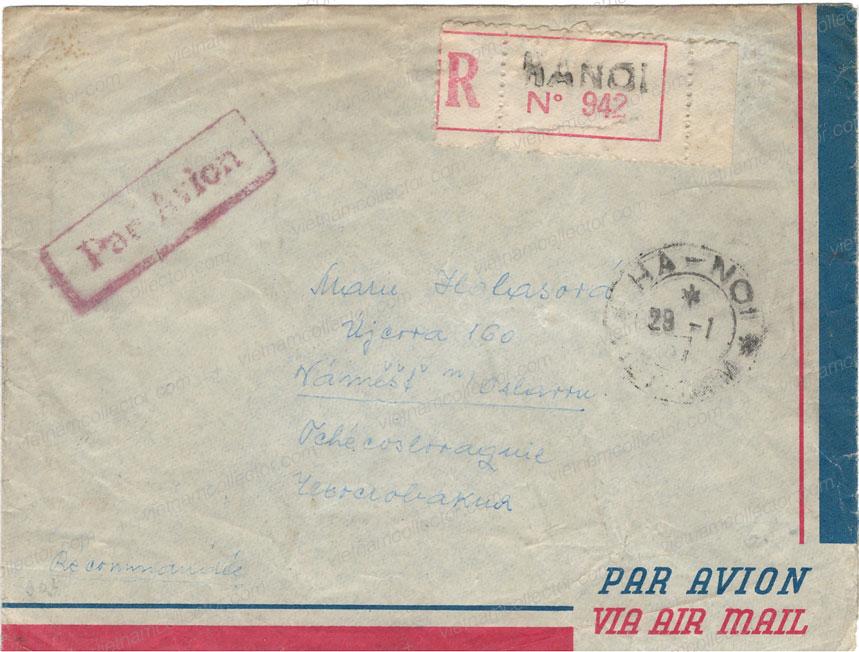
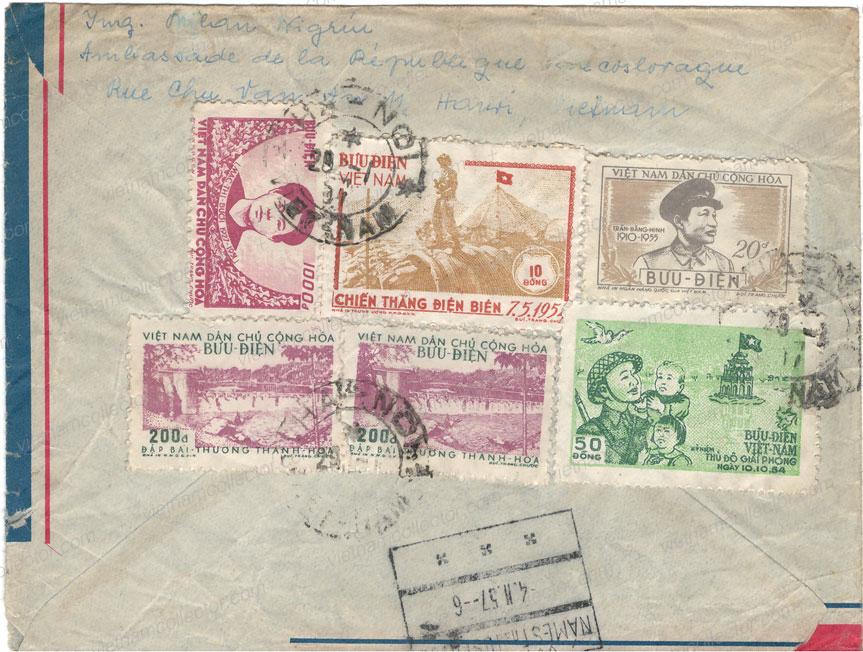
Mixed franking most likely from a member of the East German Consulate (which had access to official stamps) featuring a mix of regular stamps (including the complete Dam set Perf 13) and two official Union Congress stamps (40D and 100D) for an overall postage of 1,740D. The letter was registered. The basic surface letter rate abroad amounted to 300D, the air mail surcharge to 350D (for every 5g) and the registration fee to 600D. So this letter must have weighed between 10-15g.
Letter mailed in February of 1957 from Hanoi to China bearing a pair of the 100D Dam stamps (Perf. 11.5) and a pair of the 50D Liberation of Hanoi stamps for an overall franking of 300D paying the surface letter rate to that country.
This is a post card to Czechoslovakia mailed in April 1958 carrying one 100D dam stamp plus one 100D Ho Chi Minh stamp for a total franking of 200 Dong.
Mixed currency franking using the old 100D dam stamp from 1956 plus the complete set issued for Ho Chi Minh’s 70. Birthday. The old stamp had been devalued by 1,000:1 on March 1st, 1959 which meant it was only worth 10xu in 1960. So, the overall franking of the bulletin amounted to 38xu. Red propaganda hand cachet on the reverse. England was still an unusual destination in the early 1960’s.
Mixed currency franking of the old Dam and Socialist Republic stamps (120D) that were devalued by 1,000:1 on March 1st, 1959 and hence were only worth 12xu at the time of mailing. Together with the stamps in New Dong (13xu) the overall postage amounted to 25xu. This tariff was above the 20xu standard letter rate to fellow Socialist countries that came in force on April 15th, 1959 so the letter was most likely heavier than the standard 20g.
Here is a letter featuring a decal of the Hanoi Citadel along with peace doves. It is franked with a strip of three 100D stamp of the dam series and a single of the Cotton Factory issue. The bottom stamp of the dam series (on the reverse) shows the plate error “comet in the left dam structure”.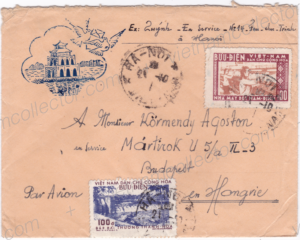
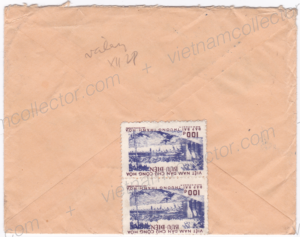
Below is a letter franked with a single 100D dam issue and other early NVN stamps for a total of 700 Dong To Czechoslovakia. Note the passer cross on the right selvage. As you can see the blue and brown colors were not lined up properly resulting in a passer shift of the blue color to the left.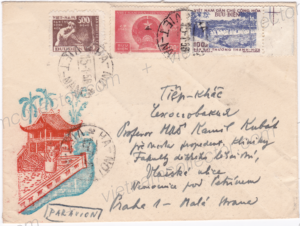
Letter to China from October, 1957 franked with three of the 100D dam issue for the 300 Dong air mail tariff to China in force in 1957. 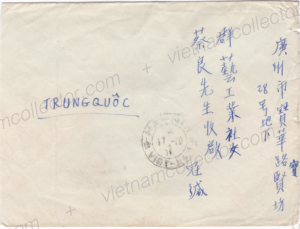
Here is a letter sent by an employee of the East German Embassy in Hanoi (note the three language rubber stamp at the bottom the was used by the embassy). It carries a mixed franking, one of which is the very rare 100D dam issue in the color violet-ultramarine. The overall franking amounts to 310 Dong.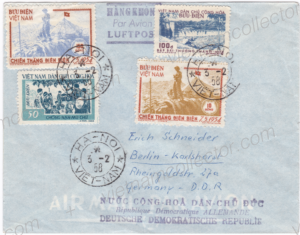
This is a letter franked with a single issue of the 100D and 300D dam series and was sent in 1958 from Hanoi to Moscow. Moscow arrival cancel on the reverse.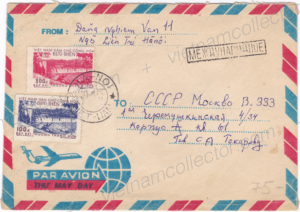
Letter franked with a single of the 100D and two of the 300D dam issue for a total of 700 Dong sent to France in March of 1957. Hing-Gai transit cancel on the reverse.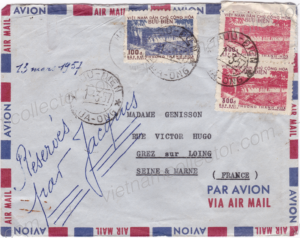
Another letter sent from an employee of the East German Embassy to Marbach, East Germany. It carries a mixed franking of 570D among which is a single copy of the 200D and the 300D value of the dam series. 
Post card from January, 1957 from Hanoi to Czechoslovakia franked with a single of the 200D dam issue. Note the fairly weak impression of the green color on the stamp.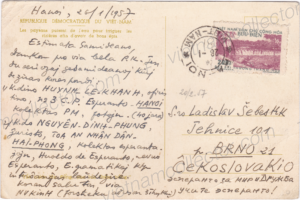
Letter sent in November of 1959 from Hanoi to Moscow also featuring a single 200D stamp. Moscow arrival cancel on the reverse.
Letter sent from the East German Embassy in Hanoi to Dresden, East Germany. It carries two of the 200D value of the dam series and a single of the 500D Production and Thrift series for a total franking of 900 Dong. Clearly, this letter carried a heavier content.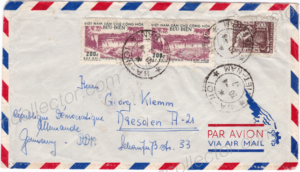
Letter sent in April, 1958 from an import and export monopoly to a gift shop in England that most likely also sold stamps. This company was probably the precursor to Xunhasaba that sold philatelic products to the West. It carries two of the 200D dam issue for a total franking of 400 Dong. Note that the required postage was marked on the top right of the envelope.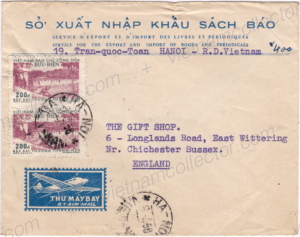
Letter sent in February, 1959 to China. Note that the rate had now gone up from 300 to 400 Dong . Featuring two of the 200D issue.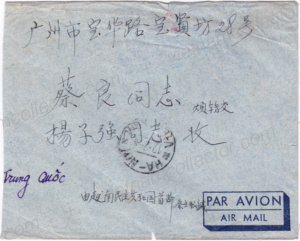
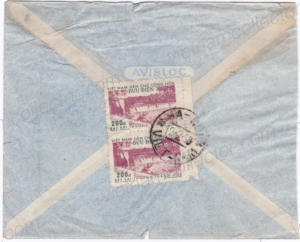
Here is a letter sent by the Vietnam Peace Committee in Hanoi to the Austrian Peace Council in Vienna, Austria. It carries two stamps of the 200D dam series for a total franking of 400 Dong. Note the routing through China in both corners . So, the letter was either traveling through Beijing (Peking at the time) or Guanzhou (Canton).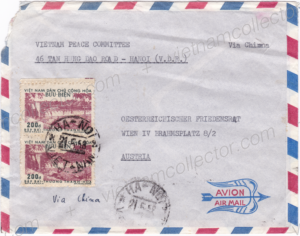
Single franking of the 300D value from October, 1958 paying the surface letter rate to China.
Letter the Vietnamese Red Cross to the Committee of the International Red Cross in Geneva from January , 1958. On the reverse it carries a strip of three of the 300D value of the dam series for a total franking of 900 Dong. The high franking indicates a heavier content.
Letter with a single franking carrying one stamp of the 300D value of the dam series sent in March of 1959 to West Germany. Note that the air mail surcharge had been abandoned on January 16th, 1959, so the franking was in fact correct.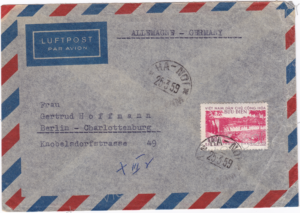
Post card showing a late usage in January, 1962 of the 300D dam value in combination with a 30 xu stamp issued in 1961. The March 1, 1959 currency devaluation of 1000:1 reduced the value of the dam stamp also to 30 xu so that this post card is franked with a total postage of 60 xu or 0.6 new Dong. East Berlin transit stamp. Note the writers comments about women like the one featured on the card that carry rocks in baskets to make road foundations.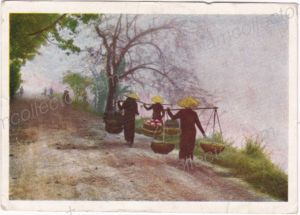
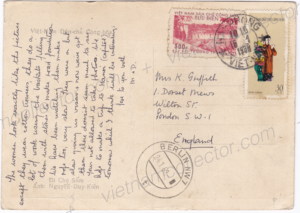
Mailing of another state owned enterprise that was involved in the distribution books and periodicals to London, England. Letters to England in the late 1950’s were very rare. The letter carries a mixed franking of standard and official stamps. In this case a pair of the 300D Dam stamp (Perf.13.0) and the 500D Cu Chin Lan stamp was used for an overall postage of 1,100D.
Letter franked with one of the 200 and 300Dong stamps sent to Klewitz in February of 1966 (late usage). It is an interesting mixed currency franking. The pre 1959 stamps (960 Old Dong) had been devalued 1,000: 1 in March of 1959 so they were only worth 96 xu in 1966. Interesting also the use of the 150 Dong Official stamp from 1958. Normally these stamps were only available to Government Offices, Non-Governmental Organizations and foreign embassies. Together with the stamps in new currency the letter had an overall franking of 1.92 Dong. Since the standard 20 gram registered letter tariff to West Germany was only 50 xu this large letter must have been heavier and or larger than the standard.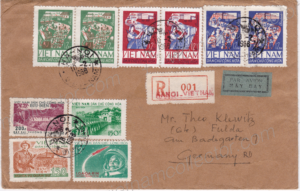
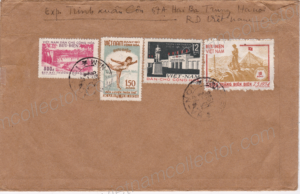
Registration Nr. 100039


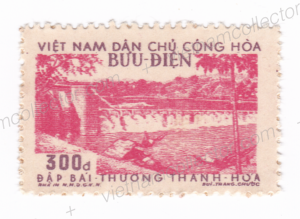
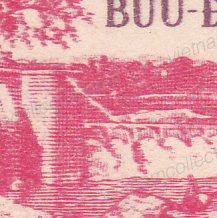
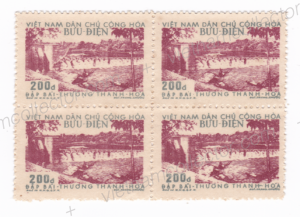
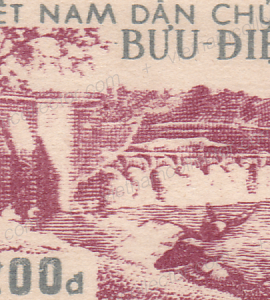
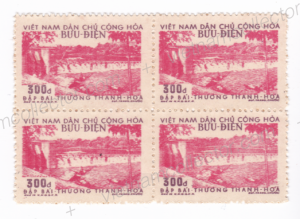
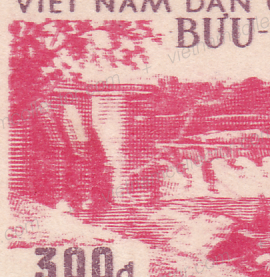
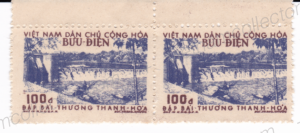
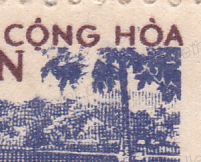
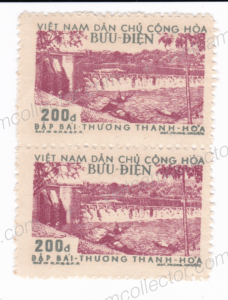
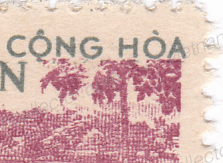

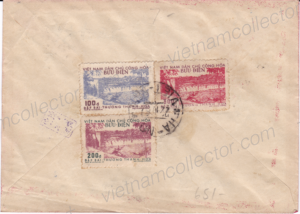
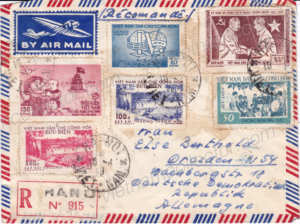
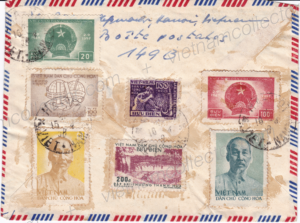
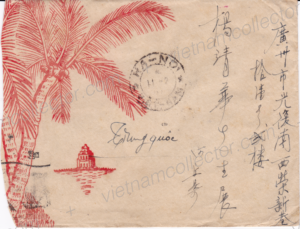
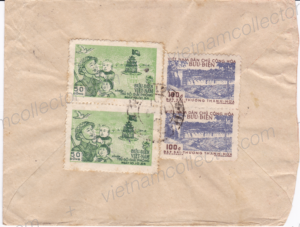
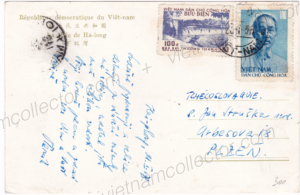
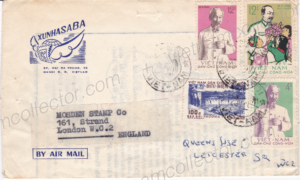
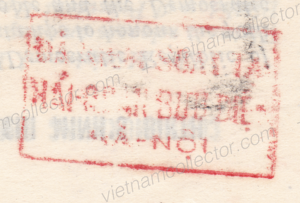
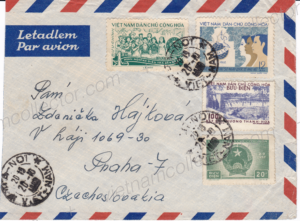
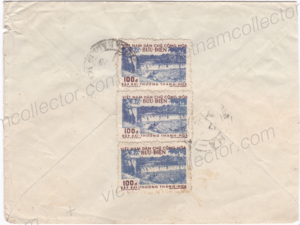
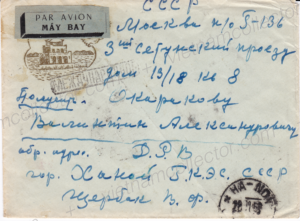

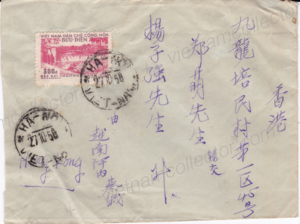
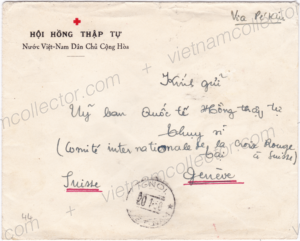
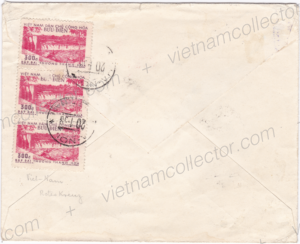
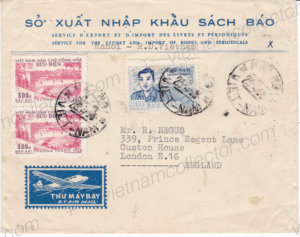
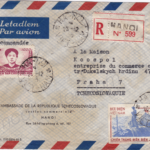
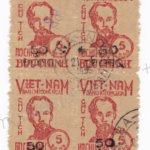


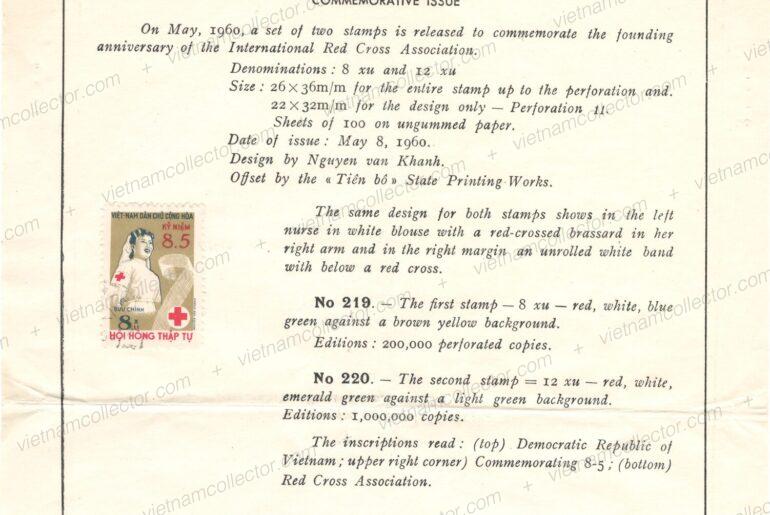
Comments are closed.